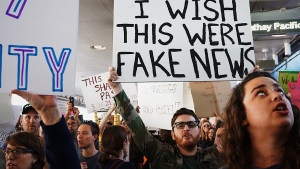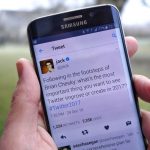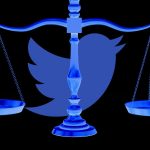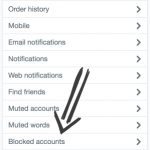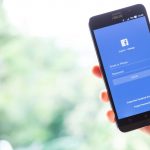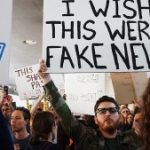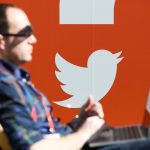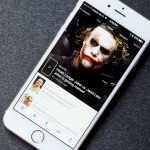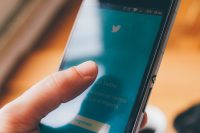The Case Against Louise Mensch’s Blue Twitter Checkmark
The best and worst thing about Twitter is that you can say anything, and people may actually listen. And I mean anything.
Today we have a searing example of that principle from Twitter user Louise Mensch, a former British MP turned incendiary politics writer, who sent an alarming and almost certainly false tweet early this morning:
My sources say the death penalty, for espionage, being considered for @StevenKBannon. I am pro-life and take no pleasure in reporting this.
— Louise Mensch (@LouiseMensch) July 19, 2017
The implications are bizarre, to say the least. And if you actually play out the scenario in your head, you realize there’s almost no way it’s true. For one, how would a penalty already be decided for an indictment that has yet to be made? It’s not worth delving further into the specifics of this Bizarro World, but it’s safe to say that the contents of this tweet should be deemed misinformation at best.
This isn’t a first for Mensch. Through her Twitter account, she has has long peddled conspiracy theories about hidden courts and global espionage, always citing anonymous sources. She currently has over a quarter of a million followers, putting her in the ranks of viral conspiracy theorists like Eric Garland, whose famous tweetstorm about political “game theory” last year still has people scratching their heads over what it means.
Posturing oneself as a brazen political insider with well-placed anonymous sources has become a potent currency on social media. Since the presidential election, dozens of formerly unknown political figures have materialized with this approach. Mensch, Garland, and their ilk have amassed hundreds of thousands of followers–many of whom heed their words, retweet their unfounded allegations, and are sometimes incited to partake in online witch hunts.
What’s galling is that many of these same spreaders of misinformation are given a special designation on Twitter–a blue verification checkmark. This icon was originally conceived as a way to verify celebrities and other high-profile Twitter users against impersonators and hoax accounts. Later, it was extended to include journalists and other newsmakers who tweet under their real names, but it’s since transcended into a sort of status symbol. While anyone can now apply to receive a checkmark, not everyone gets one. (Anecdotally, I’ve been told that it’s still difficult to obtain one, even with the new democratized application process.)
And yet for reasons that remain unclear, both Mensch and Garland have these checkmarks, and they’re not the only questionable users who enjoy the designation. InfoWars founder Alex Jones–who has long spread false and inflammatory stories–has also been given the special icon. In the Twitter world, the checkmark grants these users validity, giving a little extra weight to everything they tweet.
Verification Or Validation?
Twitter maintains that the designation has nothing to do with the contents of a person’s tweets; it’s simply a way of proving that the person is who they say they are. When I contacted Twitter for comment, a spokesperson pointed me to the site’s explanation of the icon.
“The blue verified badge on Twitter lets people know that an account of public interest is authentic,” the company says on its website. “A verified badge does not imply an endorsement.”
Fair enough. But it hasn’t always played out that way. For instance, when former Breitbart writer Milo Yiannopoulos was reportedly harassing people on Twitter early last year, the company removed his checkmark (although it didn’t say why). Some time later, it banned him completely.
But it’s telling that Twitter’s response was to remove the prestigious icon—a way to delegitimize Yiannopoulos—even though it was still Yiannopoulos who was sending the tweets. The move suggests Twitter knows that its blue badge is about more than mere verification. In a way, it was tacitly saying that the checkmark does hold real weight. While Twitter may not be endorsing the speech, it is at least admitting that people see verified users differently than unverified ones. And if that’s the case, why should people like Mensch—whose main aim seems to be to spread unfounded information—be given the weight of Twitter’s unspoken endorsement?
Twitter likely views this as a slippery slope. If one account is delegitimized for spreading false news, where does it end? Many have called for Twitter to ban President Trump, which is surely not going to happen. Still, there’s a huge difference between Trump and this cadre of newly minted political pundits who are growing their audience exclusively on the platform. This shouldn’t be a hard distinction for the company to make.
It’s dire times in media right now. People on the far right hurl the phrase “fake news” as a way to discredit mainstream news sources. Meanwhile, actual fake news continues to flourish on platforms like Facebook and Twitter. As more people consume their news through social platforms, legacy media companies are trying to figure out a way to differentiate themselves from the rest. It’s up to the platform to figure out how best to deliver accurate information to its users.
Twitter allowing accounts like Mensch’s have a blue checkmark because she’s a “public figure” simply doesn’t cut it anymore. Both it and Facebook should own up to the power they hold as platforms and create better ways to help stop misinformation.
Twitter may see its ultimate goal as providing a forum for free and open speech, but it still needs to figure out how it can also hold users accountable for willfully deceiving the masses. Or, at the very least, it could make it harder for seemingly official accounts to basically imply that Steve Bannon is about to be executed.
Whether Twitter admits it or not, its verification badge is a status symbol. Why give it to conspiracy theorists?
The best and worst thing about Twitter is that you can say anything, and people may actually listen. And I mean anything.
Fast Company , Read Full Story
(35)

